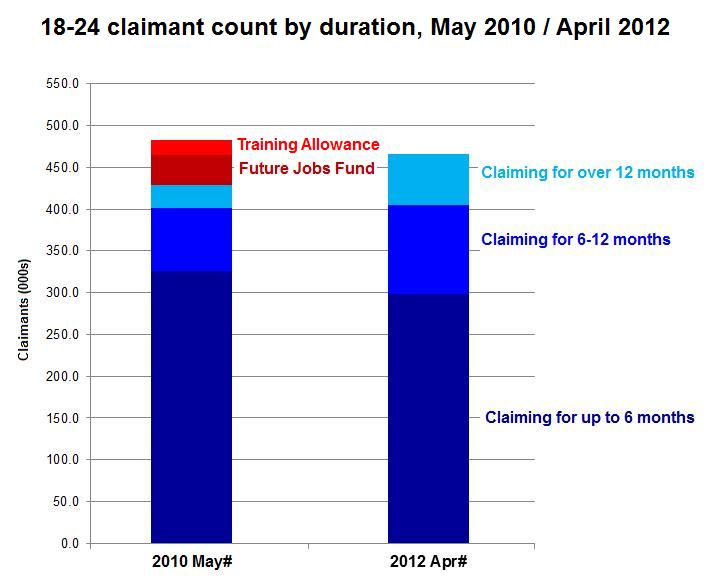Did Labour 'fix the figures' on unemployment while in office?
Readers of the Daily Express yesterday were witness to a startling accusation:
"HOW LABOUR ‘FIXED THE FIGURES’ TO HIDE TRUE JOBLESS MISERY"
Daily Express, 31 May 2012
According to the newspaper, it was claimed this week that Labour concealed thousands of jobless youths (aged 18-24) from official unemployment statistics.
However the claim was actually made several weeks ago in the House of Commons by the Work and Pensions Secretary, Iain Duncan Smith:
"The previous Government gerrymandered the figures on youth unemployment. When somebody had been unemployed for six months, they put them on one of their programmes—the future jobs fund or whatever—and took them off the unemployment register."
Iain Duncan Smith, House of Commons, 17 May 2012
But does this claim have any credibility?
The statistics under debate here are claimant count levels, measured by the Office for National Statistics, which monitor the number of people claiming Jobseekers Allowance (JSA), and is actually separate to the unemployment numbers. In this case - the claimant count applying to 18-24 year-olds who have been claiming for more than six months.
Mr Duncan Smith and the Express are referring to two Government programmes set up under Labour - the Future Jobs Fund and the Training Allowance.
The Future Jobs Fund was set up in October 2009, offering young people who had been looking for work for a year a guaranteed job, work experience or training lasting at least six months, taking them out of the cohort counted for the claimant count. The Training Allowance (for those that moved into training) similarly required participants to move off JSA.
As a recent parliamentary briefing note points out, this effectively enforced a maximum limit on the duration of claims for JSA - hence statistics that monitor the number of people claiming JSA long-term would register falls simply by virtue of the Government schemes taking effect. In other words, the claimant count would no longer detect people moving onto these schemes.
The potential effect of this can be examined by looking to the statistics themselves.
According to the ONS, the 18-24 claimant count in May 2010 (the time of the election, and when Labour left office) stood at 429,000. Of these, 104,000 had been claiming JSA for more than six months. 28,000 had been claiming for over 12 months.
The Department for Work and Pensions (DWP), meanwhile, provide statistics on the claimant numbers for the Future Jobs Fund (till November 2011) and the Training Allowance (till October 2011).
Examining these, in May 2010 there were 35,600 individuals on the Future Jobs Fund and 18,000 receiving a Training Allowance. This represents 53,600 young people on Government-sponsored jobs schemes who would not have been measured by the claimant count.
Iain Duncan Smith's argument is that, since then, the Government's new schemes - Work Experience and the Work Programme - mean participants continue to claim JSA until they find a job. This can have a significant upward effect on the claimant count compared to Labour's programmes which took people off JSA.
Comparing these to the latest claimant count statistics for April 2012 yields the following illustration:

The red areas indicate the 18-24 year-olds on either Government scheme who would not have showed up on the official JSA claimaint statistics. Adding these to the picture indeed delivers Mr Duncan Smith's claimant count 'reduction' since the election. Participants in current Government schemes who still claim JSA now show up as long-term claimants in the April 2012 stats.
So are the statistics 'fixed'?
Whether Labour can be accused of 'fixing' statistics to keep the count lower is, of course, debatable. The ONS claimant count only measures those claiming JSA, and to this extent the count as it stands accurately demonstrates that there are 37,000 more claimaints now than there were in May 2010.
It also isn't necessarily the case that the individuals on the Government schemes in May 2010 (the red areas of the graph) would have been on JSA had they not been on the schemes, so placing these individuals in the analysis as if they 'should' be counted isn't necessarily a better way to measure the problem.
Finally, the Work and Pensions Secretary effectively argues that people on Government work schemes should be considered as 'out of work' and thus reflected on the claimant count. However whether someone working on a Government programme is strictly out of work is another matter.




Sumit Rahman (not verified) wrote,
Thu, 05/07/2012 - 08:50
Also the headline figure in the ONS Labour Market Statistics is based on the International Labour Organisation's definition of what counts as employed, unemployed and economically inactive. These figures would not be directly affected by any government's decisions on who is eligible for JSA etc.